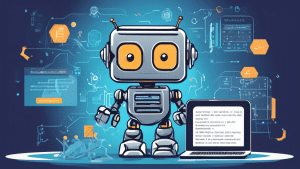As the field of natural language processing (NLP) continues to advance rapidly, large language models (LLMs) have become an essential part of many AI-driven applications. Among these, decoder-only LLMs have garnered significant attention for their unique architecture and impressive performance. In this article, we will delve into what decoder-only LLMs are, and explore the various benefits they offer.
What Are Decoder-Only LLMs?
Decoder-only LLMs are a class of large language models that exclusively utilize the decoder part of the transformer architecture. Unlike the traditional transformer model, which consists of both an encoder and a decoder, decoder-only models focus solely on the responsibilities of the decoder.
The transformer decoder is designed to generate text by predicting the next word in a sequence, given the preceding words. This autoregressive nature allows the model to generate coherent and contextually accurate continuations of a provided text prompt.
Benefits of Decoder-Only LLMs
There are several advantages inherent to decoder-only LLMs that contribute to their growing popularity and effectiveness in real-world applications.
1. Improved Text Generation
Since decoder-only LLMs are explicitly focused on text generation tasks, they often achieve superior performance in creating natural and contextually relevant text. Their autoregressive architecture allows them to better capture and extend the context of a given prompt, which results in more accurate and coherent outputs.
2. Simplified Architecture
The simplified architecture of decoder-only models can offer computational and developmental advantages. By focusing solely on the decoding process, these models can be optimized more efficiently for tasks that rely heavily on text generation. This simplification can also lead to faster training times and potentially lower resource consumption compared to models that use both encoding and decoding processes.
3. Versatility in Applications
Decoder-only LLMs are highly versatile and can be adapted to a wide range of applications that require text generation. Some common use cases include:
- Chatbots: Creating responsive and context-aware conversational agents.
- Content Generation: Generating articles, stories, and other forms of written content.
- Translation: Providing accurate and contextually appropriate translations.
- Summarization: Condensing longer texts into concise summaries.
The flexibility of decoder-only models makes them suitable for both general-purpose and task-specific applications.
4. Enhanced Scalability
Another significant benefit of decoder-only LLMs is their scalability. The focused nature of the decoder process allows these models to be scaled to larger sizes more efficiently, thereby improving their performance and capability to handle more complex tasks. As models grow in size, their ability to understand and generate human-like text improves, making them invaluable tools in NLP.
5. Cost-Effectiveness
In certain scenarios, decoder-only LLMs can be more cost-effective than their encoder-decoder counterparts. The reduction in architectural complexity often translates to lower operational costs, both in terms of computational resources and energy consumption. This cost-effectiveness can be particularly beneficial for businesses and developers looking to integrate powerful NLP solutions without a substantial financial investment.
Conclusion
Decoder-only LLMs present a highly promising avenue in the landscape of NLP. Their focused architecture, coupled with their impressive text generation capabilities and scalability, makes them a valuable asset for a variety of applications. As research and development in this field continue to advance, decoder-only models are likely to play an increasingly central role in the future of natural language understanding and generation.






No comments! Be the first commenter?